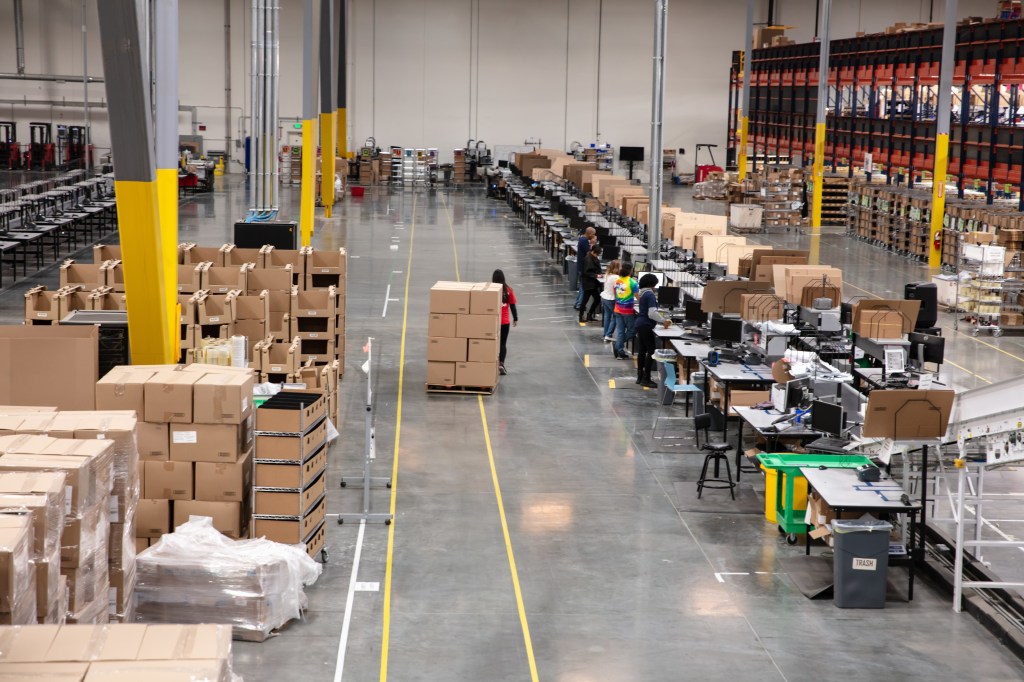SACRAMENTO, Calif. — Californians working indoors are getting immediate protections from extreme heat as much of the state bakes in triple-digit temperatures this week.
California has had heat standards on the books for outdoor workers since 2005, but the state announced Wednesday that a set of rules for indoor workers had been finalized following an expedited review. The state’s Occupational Safety and Health Standards Board approved the regulation last month, but it needed to be vetted for legal compliance.
“This regulation provides protections for workers across California and helps prepare employers to deal with the challenges of rising temperatures in indoor environments,” said Debra Lee, chief of California’s Division of Occupational Safety and Health.
California is among a few states responding to the growing impacts of climate change and extreme heat with worker safety standards. Earlier this month, the Biden administration proposed federal rules to protect indoor and outdoor workers from heat exposure as extreme heat, already the No. 1 weather-related killer in the U.S., becomes even more dangerous.
California’s standards require indoor workplaces to be cooled below 87 degrees Fahrenheit when employees are present and below 82 degrees in places where workers wear protective clothing or are exposed to radiant heat, such as furnaces. Worksites that don’t have air conditioning may use fans, misters, and other methods to bring the room temperature down.
The rules allow workarounds for businesses if they can’t cool their workplaces sufficiently. In those cases, employers must provide workers with water, breaks, areas where they can cool down, cooling vests, or other means to keep them from overheating.
But even with workarounds, businesses are concerned about the cost of complying with the regulation, especially small businesses that don’t own their storefronts or are in old buildings, said Robert Moutrie, a senior policy advocate at the California Chamber of Commerce.
“The simplest answer to this regulation is AC, and that’s a costly investment,” Moutrie said. “If you’re a small business and you don’t own your structure, you can’t make changes like creating a new space to cool down.”
The rules have been in development since 2016 — delayed, in part, because of the covid pandemic. The worker safety board requested the regulations be expedited. A standard review would have delayed the regulation taking effect until the fall, leaving workers largely unprotected from the summer heat.
The regulation applies to most indoor workplaces, including classrooms and even delivery vehicles. But state regulators exempted prisons and local correctional facilities after Gov. Gavin Newsom’s administration projected it could cost the California Department of Corrections and Rehabilitation billions of dollars to implement.
The board intends to draft a separate regulation for the tens of thousands of workers at the state’s 33 state prisons, conservation camps, and local jails. That could take a year, if not longer.
In 2021, the Department of Health and Human Services reported, 1,602 heat-related deaths occurred nationally, which is likely an undercount because health care providers are not required to report them. In 2023, HHS reported, 2,302 heat-related deaths occurred. It’s not clear how many of these deaths are related to work, either indoors or outdoors.
Meanwhile, global temperatures in June were a record high for the 13th straight month.
“This is really one of the biggest safety issues we see workers experiencing across California in many different industries,” said Tim Shadix, legal director at the Warehouse Worker Resource Center, which lobbied for the protections. “And the problem is only getting worse with climate change and hotter summers.”
